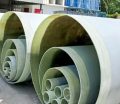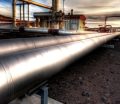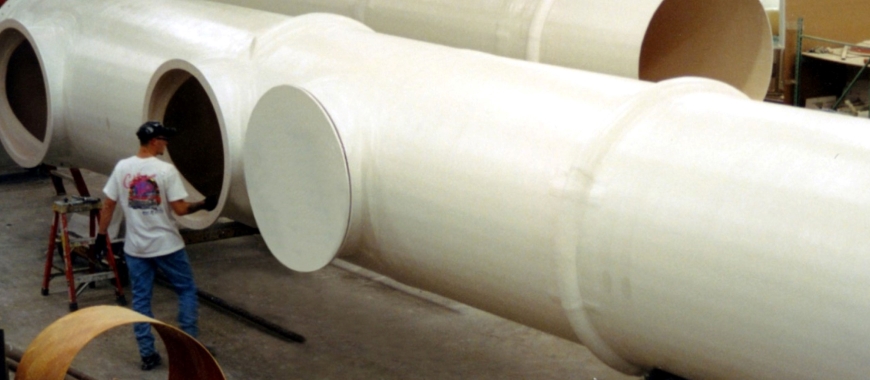
The FRP pipe life expectancy is typically 30 to 50 years, but with proper maintenance, it can last up to 100 years depending on quality and application. One of the key factors contributing to this long lifespan is the material’s inherent corrosion resistance and UV stability, which makes it ideal for use in harsh environments. Unlike traditional materials that can degrade quickly when exposed to chemicals, saltwater, or extreme temperatures, FRP maintains its structural integrity for decades. With proper maintenance, including regular inspections and cleaning, the frp pipe life expectancy can be extended even further, offering a durable and cost-effective solution for industrial applications across various sectors.
The Key of FRP Pipe Life Expectancy
FRP pipe life expectancy refers to the anticipated operational lifespan of Fiberglass Reinforced Plastic pipes used in industrial and commercial applications. Known for their durability, FRP pipes are a popular choice due to their corrosion resistance, UV stability, chemical compatibility, and suitability for harsh environments. With proper care and maintenance, FRP pipes can offer reliable performance for decades, providing long-term value in fluid transport systems.
Primary Factors Affecting FRP Pipe Life Expectancy
The life expectancy of FRP (Fiberglass Reinforced Plastic) pipes is influenced by a variety of factors, including the materials used, the environment of installation, and the level of maintenance. Here are the key factors that impact FRP pipe longevity:
Corrosion Resistance
One of the primary reasons FRP pipes have an extended life expectancy is their exceptional resistance to corrosion. Unlike traditional metal pipes, FRP pipes are designed to resist chemical attacks from acids, alkalis, and solvents. This makes them ideal for transporting fluids in aggressive environments, significantly extending their operational lifespan.
UV Stability
FRP pipes are engineered to resist UV degradation, which is crucial for outdoor applications where pipes are exposed to sunlight. Without UV protection, exposure to the sun could cause brittleness or loss of strength. The UV resistance in FRP pipes ensures durability and long-term reliability in outdoor environments.
Chemical Compatibility
FRP pipes are often used in industries that handle corrosive substances, such as chemical processing or wastewater treatment. The type of resin used (polyester, vinyl ester, epoxy) plays a key role in determining the chemical resistance of the pipe. Vinyl ester resins, for example, provide superior protection against harsh chemicals, extending the life of the pipe.
Environmental Conditions
Environmental factors, such as temperature fluctuations, humidity, and exposure to harsh elements, can affect the performance of FRP pipes. FRP pipes are designed to withstand extreme temperatures and moisture, making them suitable for a wide range of applications. For instance, in coastal areas, FRP pipes can resist the corrosion from saltwater, further enhancing their life expectancy.
Mechanical Stress
Exposure to mechanical stresses—such as pressure from external forces or internal fluid flow—can influence FRP pipe durability. Proper installation, including the use of correct support systems, can minimize mechanical wear and enhance the pipe’s overall lifespan.
To maximize the life expectancy of FRP pipes, industries must select the right materials for their specific applications, ensure proper installation, and maintain regular monitoring. By considering factors such as resin type, environmental conditions, and maintenance practices, industries can ensure the reliable, long-term performance of FRP pipes.For example, high temperature FRP pipe installed in environments with extreme temperatures may experience gradual degradation over time, especially if they are exposed to prolonged thermal cycling.
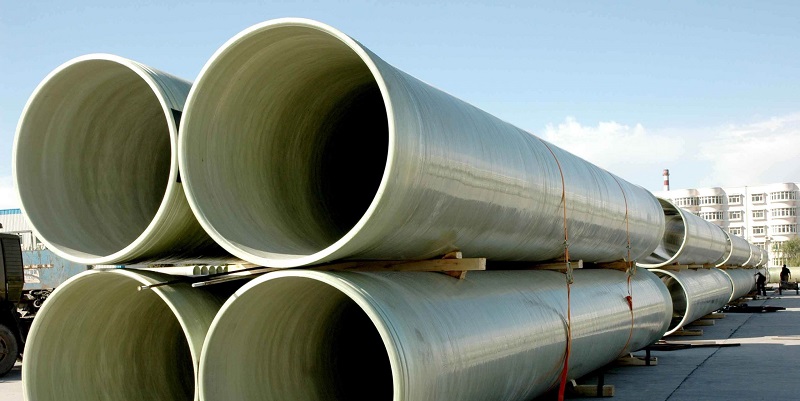
Maintenance and Monitoring for FRP Pipe Life Expectancy
Regular maintenance and monitoring play a crucial role in ensuring that FRP pipes perform at their best throughout their life expectancy. While FRP pipes are known for their low maintenance requirements, routine inspections and minor maintenance can go a long way in preventing issues and prolonging the life of the pipes.
Regular Inspections
Conducting regular inspections is essential for identifying any potential issues with FRP pipes early on. Inspections can reveal signs of wear, damage, or changes in the pipe’s condition, allowing for timely repairs or replacements before problems escalate. Scheduling inspections on a routine basis helps ensure that the pipes are functioning properly and that frp pipe life expectancy is maximized.
Preventive Maintenance
Preventive maintenance, such as cleaning and checking for leaks, can also help extend frp pipe life expectancy. Removing any debris or buildup from the interior of the pipes ensures that the flow of fluids remains unobstructed, which reduces stress on the system. Additionally, regularly checking for small leaks or cracks can prevent larger issues from developing and prolong the operational life of the piping system.
Monitoring Environmental Conditions
Monitoring the environmental conditions around FRP pipes is another important step in maximizing their life expectancy. Changes in temperature, humidity, or exposure to chemicals can all affect the performance of FRP pipes. By keeping track of these conditions and making necessary adjustments, industries can ensure that their FRP piping systems remain in optimal condition for years to come.
Maintenance and Inspection as Key Elements in FRP Pipe Life Expectancy
While FRP pipes are designed to be low-maintenance, regular inspections and preventative maintenance play a critical role in maximizing their life expectancy. Maintenance procedures may include visual inspections for signs of wear or damage, testing for leaks, and cleaning the internal surfaces to prevent the buildup of debris or scaling that can reduce flow efficiency.
It is important to establish a regular maintenance schedule that takes into account the specific conditions of the installation environment. Pipes installed in harsh environments or those exposed to fluctuating pressures may require more frequent inspections to ensure that they remain in optimal condition. Working with a supplier like GangLong Fiberglass, which offers maintenance guidelines and technical support, can help ensure that FRP pipes receive the care they need to maintain their integrity over time.
The frp pipe life expectancy can also be extended by using protective coatings or linings that offer additional resistance to environmental factors such as UV radiation or abrasion. By taking these preventive measures, operators can avoid costly repairs or replacements while ensuring that the system continues to perform efficiently throughout its operational life.
Maintenance Practices to Extend FRP Pipe Life Expectancy
While FRP pipes are designed to be low-maintenance, regular inspections and maintenance are still essential to maximize the frp pipe life expectancy. Routine maintenance can help detect any early signs of wear or damage, allowing operators to address issues before they escalate into costly repairs or system failures. Visual inspections, pressure testing, and monitoring for leaks are some of the basic maintenance tasks that can ensure the long-term performance of FRP piping systems.
Preventive maintenance also plays an important role in extending the frp pipe life expectancy. For example, cleaning the pipes periodically to remove any debris or buildup helps maintain flow efficiency and prevents blockages that could lead to increased pressure within the system. Over time, certain deposits, such as scale or sediment, can form inside the pipes, reducing their efficiency and potentially leading to premature wear.
In addition to regular cleaning, applying protective coatings or liners can further enhance the frp pipe life expectancy. These coatings provide an extra layer of protection against environmental factors such as UV exposure or chemical attacks, ensuring that the pipes remain functional and in good condition for many years. GangLong Fiberglass offers a variety of protective solutions designed to enhance the durability and longevity of their FRP pipes.
Selecting the Right FRP Pipe Spacers for Your System
The Key of Installation in FRP Pipe Life Expectancy
Proper installation is crucial for ensuring optimal frp pipe life expectancy. Incorrect installation methods, such as poor alignment, improper joint connections, or inadequate support, can lead to stress points that cause premature wear or failure. By adhering to best practices during installation, industries can significantly increase the lifespan of their FRP pipes.
Joint Integrity
Ensuring proper joint connections is essential for maintaining the structural integrity of FRP pipes. When installing FRP piping systems, it is important to use compatible fittings and seals that can withstand the operating conditions of the system. Poorly connected joints can lead to leaks or weak spots that reduce the overall durability of the pipe system.
Support Systems
Properly supporting FRP pipes throughout their installation is another critical aspect of maximizing frp pipe life expectancy. FRP pipes should be adequately supported at intervals to prevent sagging or bending, which can cause stress fractures over time. Using appropriate hangers and brackets ensures that the pipes maintain their structural integrity and perform reliably over their intended lifespan.
Alignment and Positioning
Incorrect alignment during installation can lead to additional wear and tear on FRP pipes. Ensuring that the pipes are correctly positioned and aligned during the installation process prevents unnecessary stress on the system. This reduces the likelihood of cracks or damage occurring during operation, thus extending the life expectancy of the pipes.
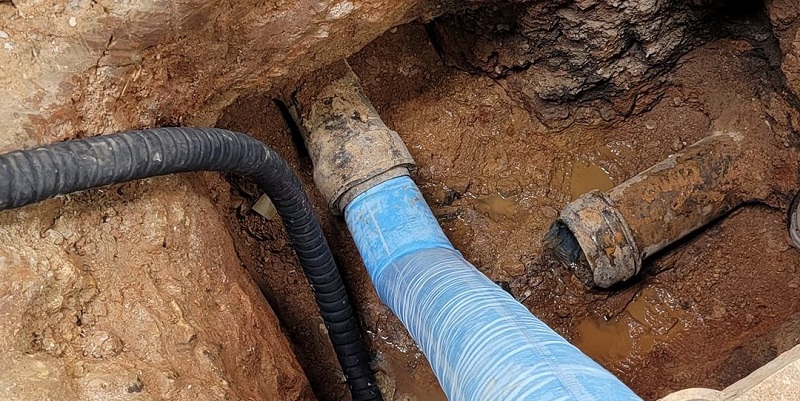
The Role of Installation in FRP Pipe Life Expectancy
Proper installation plays a crucial role in maximizing the life expectancy of FRP (Fiberglass Reinforced Plastic) pipes. Incorrect installation practices, such as poor alignment or improper joint sealing, can place undue mechanical stress on the pipes, leading to premature failure. To ensure that FRP pipes perform optimally over their service life, it’s essential to follow manufacturer guidelines and work with experienced professionals.
GangLong Fiberglass provides detailed installation instructions to help prevent common mistakes that can shorten the life of the pipes. These guidelines cover key aspects such as handling pipes during transportation, aligning joints correctly, and securing them properly. By following these steps, installers can ensure that the piping system operates efficiently and lasts longer.
The choice of joining methods also impacts FRP pipe life expectancy. Common techniques such as adhesive bonding, mechanical coupling, and butt-and-wrap joints each offer distinct benefits. The right joining method should be selected based on the specific application and environmental conditions to ensure a secure, leak-proof system. Proper joint installation is vital for preventing leaks and stress, ensuring that the system performs reliably for decades.
By prioritizing correct installation practices and selecting the appropriate joining methods, industries can significantly extend the life of their FRP pipe systems.
Applications and Industries Benefiting from FRP Pipe Life Expectancy
FRP pipes are used across a wide range of industries due to their versatility and long lifespan. Industries that benefit from frp pipe life expectancy include chemical processing, oil and gas, water treatment, and marine applications.
Chemical Processing
The chemical resistance of FRP pipes makes them an ideal choice for transporting aggressive fluids in chemical processing plants. The long lifespan and low maintenance requirements of FRP pipes ensure reliable performance, even in environments with harsh chemicals.
Oil and Gas
In the oil and gas industry, frp pipe life expectancy is highly valued for transporting fluids under high pressure and temperature conditions. FRP pipes can withstand the demanding conditions of oil and gas operations, providing long-term performance without the need for frequent maintenance or replacement.
Water Treatment
FRP pipes are commonly used in water treatment facilities due to their resistance to corrosion and chemical degradation. The long lifespan of FRP pipes ensures that they can handle the continuous flow of water and wastewater, making them a reliable choice for both municipal and industrial water treatment applications.
Marine Applications
The resistance of FRP pipes to saltwater and harsh marine environments makes them a popular choice for offshore and coastal installations. Their ability to withstand the corrosive effects of seawater ensures that FRP pipes maintain their performance for decades, reducing the need for frequent replacements in marine environments.
FRP in Various Industries
FRP (Fiberglass Reinforced Plastic) pipes are widely utilized across various industries due to their versatility, durability, and resistance to corrosion. These properties make them an excellent choice for applications that require long-term reliability with minimal maintenance.
One of the primary industries using FRP pipes is water treatment, where they are employed to transport both clean and wastewater. The corrosion resistance of FRP ensures the pipes maintain their integrity over time, reducing maintenance costs and downtime. This contributes significantly to the extended FRP pipe life expectancy, making them a cost-effective option for water treatment facilities.
In the oil and gas industry, FRP pipes are commonly used on oil rigs, platforms, and refineries. Their resistance to corrosion and ability to withstand harsh chemicals and extreme temperatures make them ideal for transporting crude oil, chemicals, and other fluids. The long FRP pipe life expectancy in these demanding environments makes them indispensable for offshore and onshore operations.
FRP pipes also play a crucial role in infrastructure projects, such as stair assemblies, railings, and structural supports. Their strength, lightweight properties, and resistance to environmental stressors make them an optimal material for both functional and aesthetic purposes. GangLong Fiberglass manufactures FRP pipes and products tailored to meet the needs of industries with complex project requirements, ensuring long-lasting solutions that stand up to challenging conditions.
From water treatment to chemical processing and offshore installations, FRP pipes are increasingly the material of choice for industries seeking durability and reliability over the long term. The FRP pipe life expectancy in these demanding environments, along with FRP pipe stiffness, is a key reason why FRP is the material of choice for many operators.
The Advantages of FRP Over Traditional Materials
FRP pipes offer numerous advantages over traditional materials such as steel or concrete, particularly in terms of longevity and cost-effectiveness. Understanding these advantages helps industries make informed decisions when it comes to selecting materials for their piping systems.
Cost-Effectiveness
FRP pipes offer long-term cost savings due to their low maintenance requirements and extended lifespan. Although the initial investment in FRP piping systems may be higher than other materials, the reduced need for repairs and replacements makes them a more economical option over time. With lower operational costs, FRP pipes provide excellent value for industries seeking durable and cost-efficient solutions.
Low Maintenance
One of the most significant advantages of FRP pipes is their low maintenance requirements. Unlike metal pipes, which are prone to rust and corrosion, FRP pipes do not require frequent maintenance or protective coatings to prevent deterioration. This low maintenance aspect contributes to the overall frp pipe life expectancy and reduces the need for costly repairs or replacements.
Ease of Installation
FRP pipes are lightweight compared to traditional materials, making them easier to transport and install. This ease of installation reduces labor costs and shortens the installation timeline, providing additional cost savings for industries. Additionally, the flexibility of FRP pipes allows for easier handling, which further simplifies the installation process.
Long-Term Performance
The long-term performance of FRP pipes, such as uv resistant frp pipe, is one of the key reasons they are chosen for industrial applications. Their resistance to environmental factors such as UV radiation, chemical exposure, and extreme temperatures ensures that FRP pipes maintain their structural integrity over time. This durability makes FRP pipes a reliable choice for industries seeking long-lasting piping solutions.
FRP Resistance Properties
FRP pipes are known for their versatility and resistance to a wide range of environmental factors. The frp pipe life expectancy is greatly enhanced by the material’s resistance to corrosion, temperature extremes, and mechanical stress. In addition to these features, FRP offers several other resistance properties that contribute to its long lifespan.
FRP pipes are flame-retardant, which means that they can be used safely in environments where fire hazards are a concern. This property is particularly important in industries such as oil and gas, where fire safety is a top priority. GangLong Fiberglass produces FRP pipes with flame-retardant coatings that meet industry standards, ensuring safe and durable performance in fire-prone environments.
Another important feature of FRP pipes is their non-conductive nature, which makes them ideal for applications where electrical conductivity could pose a risk. In industries such as power generation or telecommunications, the use of FRP pipes ensures that there is no risk of electrical interference or conduction, further increasing the safety and life expectancy of the system.
FRP’s resistance to environmental factors such as saltwater, acids, and other aggressive chemicals also plays a significant role in the frp pipe life expectancy. FRP pipes are commonly used in marine environments, where exposure to saltwater can quickly degrade traditional metal piping systems. The inherent resistance of FRP to these elements allows it to maintain its structural integrity over time, even in the most challenging environments.
FRP Strength and Durability Over Time
FRP pipes maintain their strength and durability over long periods, providing industries with a reliable piping solution. The combination of glass fibers and resin in FRP construction gives these pipes their high strength-to-weight ratio, which allows them to withstand significant pressure and stress.
Maintaining Structural Integrity
Over time, FRP pipes retain their structural integrity better than many traditional materials. The fibers within the resin matrix provide reinforcement that resists mechanical wear and tear, even in demanding conditions. This feature is particularly important in industries where pipes are subject to continuous pressure, vibration, or temperature fluctuations. By maintaining their mechanical properties, FRP pipes can continue functioning effectively for decades, contributing to a longer frp pipe life expectancy.
Durability in Corrosive Environments
FRP’s durability in corrosive environments sets it apart from other materials. Unlike steel, which can rust or corrode when exposed to moisture or chemicals, FRP is immune to such degradation. This resistance ensures that FRP pipes do not weaken over time, allowing them to maintain their durability in the long run. Industries that deal with corrosive substances, such as chemical plants and wastewater treatment facilities, particularly benefit from this characteristic, as it leads to fewer repairs or replacements.
Importance of FRP Pipe Span Charts in Industrial Piping
FRP Pipe Life Expectancy: Maximizing Longevity in Industrial Applications
FRP pipe life expectancy refers to the length of time Fiberglass Reinforced Plastic (FRP) pipes can effectively serve their purpose in industrial and commercial applications. Due to their inherent resistance to corrosion, environmental factors, and chemical exposure, FRP pipes offer a long operational life when installed and maintained properly. Industries such as chemical processing, water treatment, and oil and gas rely on FRP pipes for their durability and performance. With the right care, FRP pipes can last decades, ensuring efficiency and reduced maintenance costs. This section will explore how different factors contribute to maximizing frp pipe life expectancy.
Extending FRP Pipe Life Expectancy through Technological Advances
Advancements in FRP manufacturing and material science are continually improving the frp pipe life expectancy, allowing these pipes to perform better and last longer. Innovations in resin technology, for example, have resulted in FRP pipes that are more resistant to heat, chemicals, and environmental stress. These technological improvements are particularly beneficial for industries with highly demanding conditions, such as chemical processing plants, where the pipes are regularly exposed to corrosive substances.
Additionally, advancements in coating and lining technologies provide extra layers of protection for FRP pipe shields, further extending their life expectancy. These coatings help protect the pipes from mechanical damage, UV exposure, and chemical attacks, making them more resilient in harsh environments.
By incorporating the latest technological advancements into their products, companies like GangLong Fiberglass continue to push the boundaries of what FRP pipes can achieve, ensuring that they offer even greater durability and life expectancy for a wider range of applications.
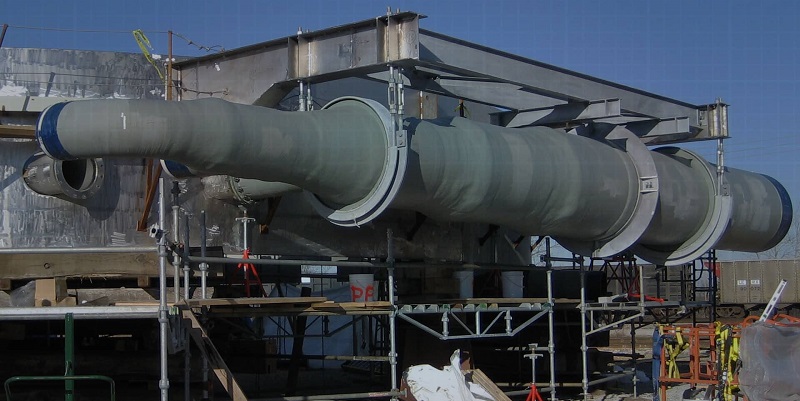
Future Trends Impacting FRP Pipe Life Expectancy
Advancements in material science and manufacturing techniques are constantly improving the frp pipe life expectancy, allowing these pipes to perform even better in challenging environments. One area of innovation is the development of new resin formulations that offer enhanced resistance to specific chemicals or environmental factors. These resins allow FRP pipes to be tailored to meet the needs of increasingly specialized applications, further extending their useful life.
In addition, improvements in coating technologies are providing even greater protection for FRP pipes. These coatings help shield the pipes from UV radiation, abrasion, and mechanical damage, ensuring that they remain functional for longer periods. The use of advanced coatings can significantly improve the frp pipe life expectancy in applications where the pipes are exposed to harsh environmental conditions.
As industries continue to evolve and demand more durable and efficient piping systems, FRP technology is expected to play an increasingly important role. Companies like GangLong Fiberglass are at the forefront of these advancements, offering high-quality FRP pipes that meet the stringent requirements of modern industrial applications.
Planning for Long-Term Performance
The life expectancy of FRP (Fiberglass Reinforced Plastic) pipes is a crucial factor during the planning and design stages of any fluid transport system. For optimal performance over the long term, engineers and procurement specialists must carefully select the right materials, configurations, and installation practices. By working closely with experienced suppliers like GangLong Fiberglass, project planners can ensure that the FRP pipes chosen will meet the specific needs of the project and maximize their longevity.
Key considerations when planning for long-term FRP pipe performance include environmental exposure, material selection, proper installation techniques, and ongoing maintenance. The right combination of these factors will help achieve a piping system that delivers reliable, low-maintenance performance for decades.
Experienced suppliers can offer valuable guidance and high-quality products tailored to the specific demands of each application, ensuring that the FRP pipes chosen are well-suited for the project’s requirements. Proper planning and regular maintenance are essential for maximizing FRP pipe life expectancy and ensuring that the system performs efficiently throughout its lifecycle.
By considering these aspects upfront, industries can reduce downtime, lower maintenance costs, and enjoy enhanced operational efficiency over the long term, making FRP pipes a cost-effective solution for any industrial or commercial application.
Know FRP’s Coefficient of Thermal Expansion
FAQs about Frp Pipe Life Expectancy
The life expectancy of a FRP water tank can be quite long, typically ranging from 20 to 40 years or more, depending on the operating environment and maintenance. FRP water tanks are particularly valued for their corrosion resistance, which makes them ideal for storing various liquids, including water, chemicals, and wastewater. The life expectancy is influenced by factors like the tank’s exposure to UV light, the temperature of the liquid being stored, and the level of maintenance it receives over time. In most cases, well-maintained FRP water tanks can meet or exceed their expected lifespan, providing a reliable storage solution for decades.
FRP is known for its exceptional durability and resistance to harsh conditions, making it a versatile material in many industries. Its durability is derived from its composite structure, which includes high-strength glass fibers and a durable resin matrix. This combination makes FRP resistant to corrosion, chemicals, and weathering. Its lightweight nature does not compromise its strength, and it can withstand significant stress and pressure over long periods. The durability of FRP makes it an ideal choice for applications in chemical processing, water treatment, and industrial infrastructure, ensuring that it remains operational for decades without significant degradation.
The design life of FRP typically ranges from 30 to 50 years, depending on the specific application and environmental conditions it is exposed to. Engineers often select FRP for its ability to meet long-term performance requirements in corrosive and demanding environments. FRP is designed to maintain its mechanical strength and structural integrity over extended periods without requiring significant maintenance or repair. Factors that can impact the design life of FRP include UV exposure, chemical interactions, mechanical loads, and temperature variations. However, with proper care and the right application, FRP often meets or exceeds its expected design life, providing reliable service in critical infrastructure.
The shelf life of FRP (Fiber Reinforced Plastic) materials, including FRP pipes, depends on storage conditions and resin types. Under optimal conditions—cool, dry, and protected from UV exposure—FRP materials can last for several years before deterioration begins. Typically, the shelf life of FRP resin can range from 1 to 5 years, depending on the resin used and environmental factors. Proper storage can help maintain the integrity of the materials, ensuring they perform as expected when installed. However, once exposed to elements, the lifespan may be reduced.
The lifespan of a GRP (Glass Reinforced Plastic) pipe, a type of FRP, typically ranges from 50 to 100 years. Factors such as installation environment, the type of fluid transported, and maintenance routines can affect this range. GRP pipes are highly resistant to corrosion, chemical damage, and abrasion, contributing to their long service life. In favorable conditions, these pipes can easily exceed 50 years without significant degradation, making them a cost-effective choice for infrastructure.
FRP tanks, used for storage or chemical processing, can last anywhere from 20 to 50 years, depending on usage, environmental conditions, and maintenance. The lifespan of an FRP tank is influenced by factors such as chemical exposure, UV radiation, temperature fluctuations, and the structural integrity of the resin. In ideal conditions, with proper maintenance and periodic inspections, FRP tanks can offer a long-term solution. However, harsh conditions (e.g., exposure to aggressive chemicals or extreme weather) may shorten their lifespan.
Flexible PVC pipes typically last around 25 to 40 years under normal conditions. The material’s lifespan is influenced by environmental factors, chemical exposure, UV radiation, and mechanical stress. Flexible PVC is more prone to damage from extreme temperatures and UV degradation compared to rigid PVC pipes. However, proper installation and maintenance can help maximize its lifespan. When used indoors or in protected environments, flexible PVC pipe can perform for decades without major issues.
While FRP (Fiber Reinforced Plastic) pipes have a high strength-to-weight ratio, they are not stronger than steel in terms of raw tensile strength. Steel has a higher inherent strength, but FRP pipes are more lightweight and corrosion-resistant, which makes them suitable for many applications where traditional materials like steel might fail due to rust or wear. In structural applications, FRP may not always match the strength of steel but offers significant advantages in corrosion resistance, making it ideal for chemical processing and outdoor environments.
FRP (Fiber Reinforced Plastic) materials can last for several decades, with typical lifespans ranging from 20 to 50 years, depending on the application and environmental conditions. FRP pipes and tanks are highly resistant to corrosion, UV radiation, and chemical damage, which contributes to their long service life. With proper installation, maintenance, and protection from extreme conditions, FRP materials can exceed their expected lifespan and continue to provide reliable service. In aggressive environments, such as wastewater treatment or chemical processing, FRP can last for decades with minimal degradation.
FRP (Fiber Reinforced Plastic) and fiberglass are often used interchangeably, but there are distinctions. Fiberglass is a type of FRP where glass fibers are used as the reinforcing material. FRP, however, is a broader term that refers to any composite material where fibers (glass, carbon, aramid, etc.) are embedded in a resin matrix. FRP tends to be stronger, more versatile, and available in different grades depending on the fiber type used, whereas fiberglass is specifically designed for applications requiring high strength, durability, and light weight. The choice between FRP and fiberglass depends on the application requirements.
FRP (Fiber Reinforced Plastic) and GRP (Glass Reinforced Plastic) pipes are both types of composite materials made by embedding reinforcing fibers in a resin matrix, but the key difference lies in the type of fibers used. GRP pipes specifically use glass fibers as the reinforcing material, while FRP can use a variety of fibers (including glass, carbon, or aramid). GRP pipes are known for their superior corrosion resistance, especially in aggressive environments like wastewater treatment or chemical processing. The term “FRP” is more general and can refer to a variety of composites, while “GRP” specifically refers to glass fiber composites.

As the editor of GangLong Fiberglass, I have years of experience and in-depth research, focusing on cable tray products, fiberglass solutions, and grille systems. I incorporate years of industry insights and practical experience into every content, committed to promoting the progress of the industry. At GangLong Fiberglass, my commitment is reflected in every product, from innovative cable trays to durable fiberglass solutions and sturdy grille systems. As an authoritative voice in the industry, my goal is to provide valuable information to professionals and businesses and promote forward-looking solutions.

